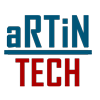
Why Safety Shouldn’t Be a Side Project #
Safety initiatives often fail when they are treated as separate from “real work.” The most effective programs integrate safety into daily tasks so it becomes second nature.
Practical Ways to Integrate Safety #
Include safety steps in SOPs (Standard Operating Procedures).
Make safety part of daily briefings and shift handovers.
Embed safety checkpoints into production or service workflows.
The Role of Technology #
Digital tools can embed safety prompts directly into operational systems, ensuring compliance without adding extra workload.
Why Safety Fails as a Side Project #
Treating safety as an add-on creates a false choice for employees: “Do I follow the safety rule, or do I meet my production target?” This conflict undermines the entire safety program. The core principle of Ontario’s Occupational Health and Safety Act (OHSA) is the Internal Responsibility System (IRS), which posits that safety is a shared responsibility. This system thrives only when safety is woven into the fabric of daily work, not just layered on top. When the safe way becomes the only way a task is performed, you move beyond mere compliance and into the realm of operational excellence.
Practical Ways to Integrate Safety into Daily Workflows #
Integrating safety means making it an inseparable part of routine tasks and processes.
Include Safety Steps in Standard Operating Procedures (SOPs): Don’t create separate safety checklists. Instead, build critical safety actions directly into the SOPs. For example, the first step in a machine maintenance procedure should be “Step 1: Verify Lockout/Tagout,” making it an integral part of the job itself.
Make Safety Part of Daily Briefings: Start every shift or project with a two-minute safety discussion. Making safety a standard agenda item in daily briefings and shift handovers normalizes it as an operational priority, just like quality or scheduling.
Embed Safety Checkpoints with Technology: This is where integration becomes seamless. Digital tools can embed safety prompts directly into operational workflows. For example, a tablet-based work order can require an operator to complete a digital pre-use inspection checklist before the system allows them to start a piece of equipment. This ensures compliance without adding extra workload and makes it impossible to bypass critical safety steps.
Related Reading: To learn how leadership reinforces safety in operations, see Role of Leadership in Workplace Safety
#WorkplaceSafety #EHS #SafetyCulture #SafetyManagement #OperationalExcellence




